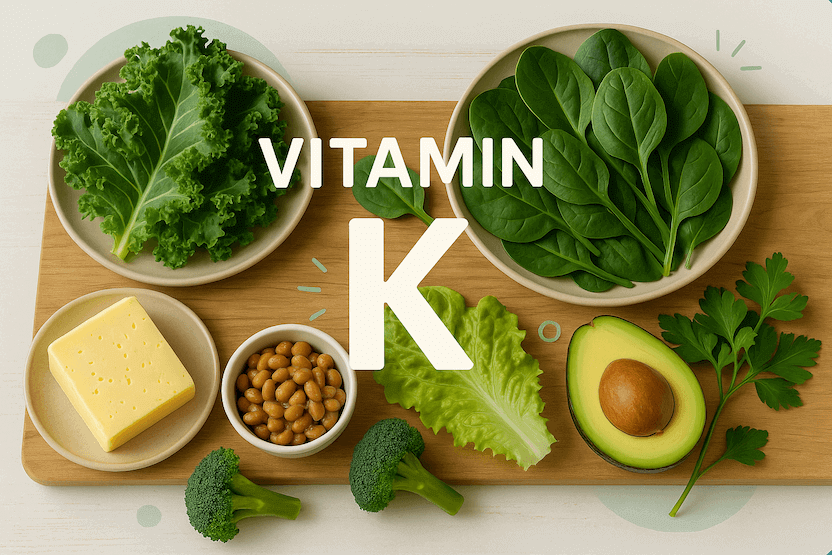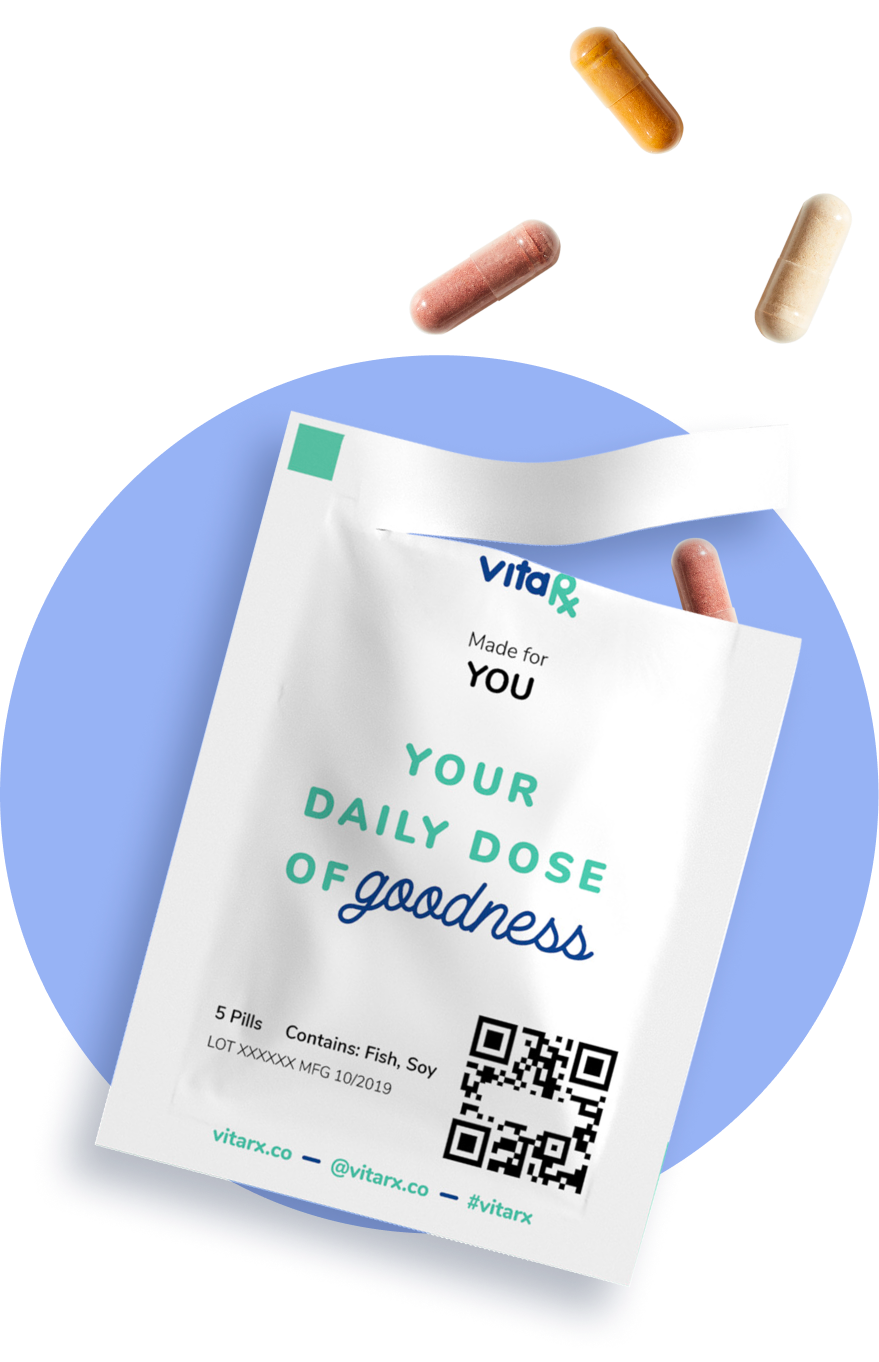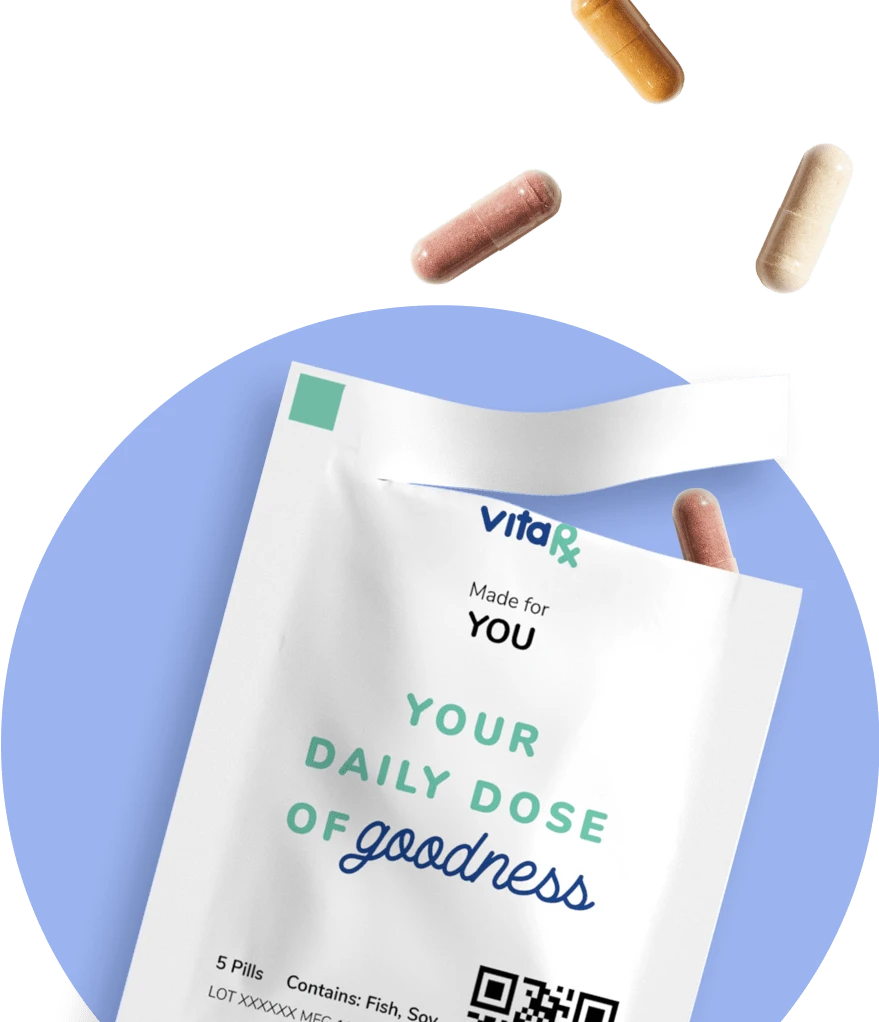Last update: July 2, 2025
6 minute read
Vitamin D with K2: How Can This Powerful Pair Improve Your Bone and Heart Health?
Discover the powerful benefits of combining Vitamin D3 and K2 for optimal bone strength and cardiovascular health.

By Derick Rodriguez, Associate Editor
Edited by Dr. Dimitar Marinov, MD, RDN, PhD

Did you know that most Americans don’t meet their daily vitamin D needs through diet alone? Even if your diet is dialed in, missing out on optimal calcium absorption can sabotage bone health and leave arteries vulnerable.
Here’s an unexpected twist: Vitamin D isn’t the solo superstar you think—it works best teamed up with vitamin K2, its lesser-known but equally essential sidekick. Together, this dynamic duo makes sure calcium lands precisely where you want it—supporting strong bones and a healthy heart.
Curious how vitamin D influences immunity as well? Check out this understanding breakdown from VitaRx’s comprehensive guide on vitamin D.
Key takeaways
- Vitamin D increases calcium absorption, while K2 directs that calcium to bones, not arteries
- Some research suggests that taking D3 and K2 together may improve bone mineral density, which may potentially reduce fracture risk, although the evidence is still emerging and not yet conclusive
- Correct supplementation dosage is key; consult a healthcare provider first
Vitamin D with K2: The dynamic duo for bone and heart health
When it comes to supporting strong bones and a healthy heart, vitamin D and vitamin K2 often work together in surprising ways. These two fat-soluble vitamins play central roles in how your body absorbs, transports, and uses calcium—a mineral fundamental for both skeletal and cardiovascular well-being.
What is vitamin D with K2?
Vitamin D, often dubbed the “sunshine vitamin,” is produced in your skin after sunlight exposure and helps your body absorb calcium from food.
However, getting calcium into your blood is just the first step. For this mineral to be truly beneficial, it needs to be steered toward bones and teeth rather than soft tissues or arteries.
Still scratching your head about why calcium sometimes ends up in arteries? Misplaced calcium can contribute to atherosclerosis, a major risk factor for heart disease.
This is where vitamin K2 steps in. Vitamin K2 activates proteins that guide calcium into bones and away from areas where it could cause harm, like arteries.
When vitamins D and K2 are consumed together, they create a powerful combination that improves calcium usage and supports bone strength, plus cardiovascular health.
But wait—doesn’t vitamin K come in different forms? Yes!
- K1 (phylloquinone) is found in leafy greens and helps with blood clotting.
- K2 (menaquinone) supports bone and arterial health by managing calcium placement.

Key functions of vitamin D and K2
Vitamin D helps absorb calcium from your gut into the bloodstream. Vitamin K2 activates proteins like osteocalcin and matrix GLA protein, guiding calcium into bones and preventing arterial buildup.
Are you getting enough vitamin D?
95% of Americans don’t get enough vitamin D through diet alone, and A substantial proportion of adults may not meet the recommended intake of vitamin K, though estimates vary by survey.
How do vitamin D and K2 work together?
Vitamin D increases calcium absorption in the intestines, but without K2, calcium may circulate in the blood and end up in the wrong places. K2 acts like a GPS—directing calcium to bones and teeth.
In a meta-analysis of randomized controlled trials, this combination is linked to higher total bone mineral density and lower levels of under-carboxylated osteocalcin, a marker of bone quality.
Need a real-world picture? Think of vitamin D as a delivery truck loading packages (calcium), and vitamin K2 as the GPS ensuring each package reaches the correct address.
Combined benefits for bone and cardiovascular health
Research shows that joint supplementation of vitamins D and K may be more effective than either nutrient alone.
- Bone health: Vitamin D increases calcium absorption; Vitamin K2 lays calcium into the bone matrix.
- Heart health: Vitamin K2 helps prevent calcium from accumulating in arteries, supporting flexible blood vessels.
Studies also note that insufficient vitamin D reduces calcium absorption, increases bone remodeling, and ultimately drives bone loss.
— Dr. Dimitar Marinov, MD, RDN, PhDVitamin D₃ and K₂ work in tandem—D₃ enhances calcium absorption while K₂ directs it into bone (not arteries)—so tailored supplementation based on baseline 25-hydroxyvitamin D testing, dietary intake, and individual risk factors can safely boost both skeletal strength and cardiovascular health.
Essential roles
Nutrient | Primary Role |
|---|---|
Vitamin D | Absorbs calcium into the bloodstream |
Vitamin K2 | Guides calcium into bones, away from arteries |
Dietary sources and recommended intakes
- Vitamin D: Sunlight, fatty fish, egg yolks, fortified foods.
- Vegan options include lichen-derived D3 and UV-exposed mushrooms (vitamin D2).
- Vitamin K2: Beef liver, egg yolks, fermented cheese, and natto.
(Not sure what natto is? It’s a traditional Japanese soybean dish packed with one of the highest natural K2 concentrations.)
Recommended Daily Intake
Vitamin | Adult Recommendation (per day) |
|---|---|
Vitamin D | 600 IU (15 µg) |
Vitamin K1 | 90–120 µg (no RDA is established specifically for K2) |
Who should consider supplementing?
You may benefit from a vitamin D + K2 supplement if you:
- Live in areas with limited year-round sunlight.
- Are an older adult with reduced vitamin D synthesis.
- Eat few K2-rich foods (fermented or animal-based).
- Want extra support for bones and arteries.
VitaRx Tip
Vitamin D3 can boost calcium absorption from as low as 10-15% up to 30-40%.
Precautions
Vitamin D and K2 are generally well tolerated at recommended doses. Very high vitamin D intakes—typically well above the tolerable upper intake level of 4,000 IU (100 µg) per day—can raise blood calcium levels.
If you’re on blood thinners or other medication, we recommend speaking with your healthcare provider first.
What about other nutrient combinations?
Vitamin D and K2 aren’t the only partners in bone-heart:
- Magnesium converts vitamin D to its active form.
- Calcium needs D + K2 for proper placement.
- Vitamin A supports a balanced immune function alongside D and K2.
VitaRx Tip
Your body can convert a small amount of vitamin K1 (leafy greens) into K2—yet far less efficiently than getting K2 directly from natto or cheese.
Frequently asked questions (FAQ)
Here are some of the most frequently asked questions about vitamin D and K2.
Final thoughts
When it comes to keeping bones strong and promoting optimal heart health, vitamin D and K2 deliver a powerful one-two punch. Vitamin D pulls calcium into the bloodstream; vitamin K2 tells it where to go—your bones, not your arteries.
So ask yourself: Are you confident you’re getting the full force of this nutritional partnership? Exploring combined supplementation might be your next smart step.
Sources and references
- The Synergistic Interplay between Vitamins D and K for Bone and Cardiovascular Health: A Narrative Review
- Efficacy of vitamin K2 in the prevention and treatment of postmenopausal osteoporosis: A systematic review and meta-analysis of randomized controlled trials
- The combination effect of vitamin K and vitamin D on human bone quality: a meta-analysis of randomized controlled trials - PubMed
Editor

Derick Rodriguez
Derick Rodriguez focuses on editing health and wellness-related content. With over half a decade of experience in the digital realm, Derick has developed a unique skill set that bridges the gap between complex health concepts and accessible, user-friendly communication. His approach is deeply rooted in leveraging personal experiences and insights to illuminate the nuances of health and wellness topics, making them more approachable and empowering readers with knowledge and confidence.
Fact checker

Dr. Dimitar Marinov
Dr. Marinov has years of experience in scientific research and preventive and clinical medicine. His publications in peer-reviewed journals are on nutritional status, physical activity, and musculoskeletal disorders among adolescents.
At VitaRx, we're not just passionate about our work — we take immense pride in it. Our dedicated team of writers diligently follows strict editorial standards, ensuring that every piece of content we publish is accurate, current, and highly valuable. We don't just strive for quality; we aim for excellence.
Related posts
While you're at it, here are some other relevant articles you might be interested in.

Get your personalized vitamin recommendations in less than
5 minutes.
Get your personalized vitamin recommendations in less than
5 minutes.






